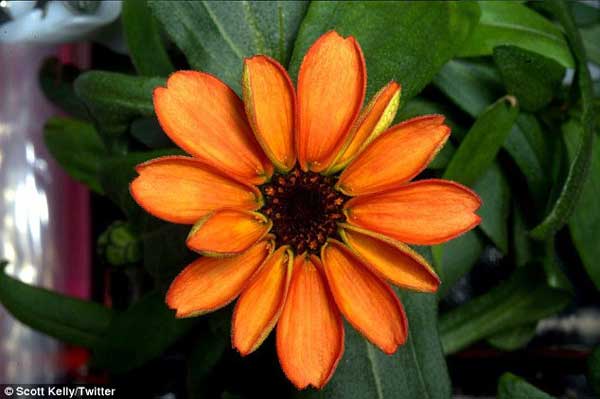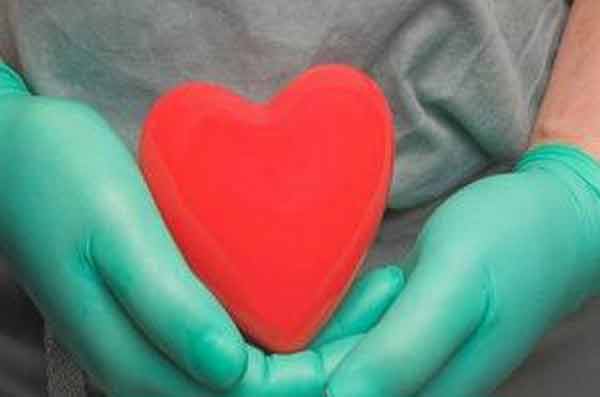California, US (BBN)-Last year Mark Watney thrilled cinema audiences with his story of survival on Mars by (among other things) growing potatoes in space – declaring ‘I am the greatest botanist on this planet!’
And now it seems that the real-life astronauts aboard the International Space Station have decided to take a leaf out of his book after growing the first flowers to bloom outside of Earth’s atmosphere, reports the Daily Mail.
Revealed by US astronaut Scott Kelly, who is currently completing the first full year in space, the flower is an edible zinnia – which can be used in salads.
The flowers were grown inside the Veggie lab aboard ISS which was installed in early May 2014.
While the ISS crew had previously raised two crops of romaine lettuce and arugula, the zinnias were the first flowering plants grown in space.
Explaining the significance of successfully growing a plant, Veggie project manager Trent Smith said: ‘The zinnia plant is very different from lettuce.
‘It is more sensitive to environmental parameters and light characteristics. It has a longer growth duration between 60 and 80 days.
‘Thus, it is a more difficult plant to grow, and allowing it to flower, along with the longer growth duration, makes it a good precursor to a tomato plant.’
While the task was ultimately a success, the crop looked doomed to failure at one point, after Smith and his team noticed water seeping out of the leaves.
Excess humidity in the flower garden soon led to mold growing on the leaves, and so a fan was brought in to help dry them out.
However, the fans worked a little too well and soon several of the plants showed signs of dehydration – and two of them eventually died off over the New Year.
The remaining plants continued to flourish, however, and by January 8 were showing signs of new growth and buds, which eventually turned into flowers.
The flowers appear very similar to those grown on earth, except for the curled edges of the petals, which could be down to the zero-gravity conditions.
Alexandra Whitmire, deputy element scientist for NASA’s Human Research Program, said: Plants can indeed enhance long duration missions in isolated, confined and extreme environments – environments that are artificial and deprived of nature.
‘While not all crew members may enjoy taking care of plants, for many, having this option is beneficial.’
‘In future missions, the importance of plants will likely increase given the crews’ limited connection to Earth.
‘Studies from other isolated and confined environments, such as Antarctic stations, demonstrate the importance of plants in confinement, and how much more salient fresh food becomes psychologically, when there is little stimuli around.’
Following the success of the zinnia flowers, another crop of romaine lettuce will be grown alongside Chinese cabbage, followed by dwarf tomatoes in 2018.
Growing the tomato plants will be a crucial stage for NASA and its aims of traveling to Mars, as such long missions will likely require astronauts to produce food without contact with Earth.
BBN/SK/AD

No Subscription? You Are Missing Out!
Join the business leaders of Bangladesh who rely on BBN's original reporting and in-depth analysis on business scenario of the country. We send only one daily email. No Spam Guaranteed!









